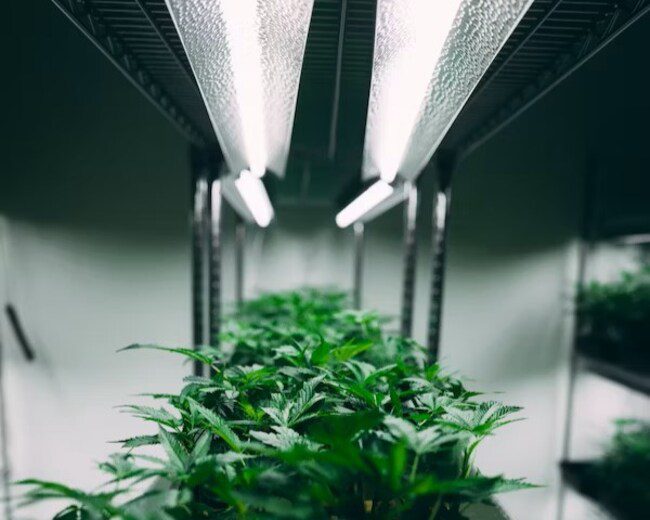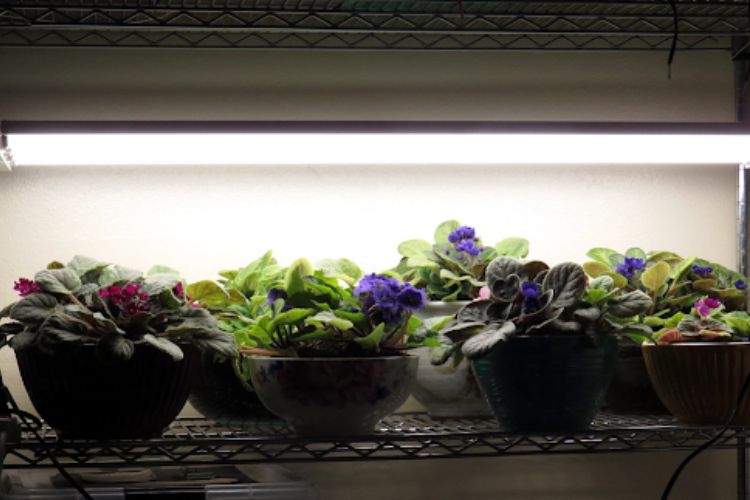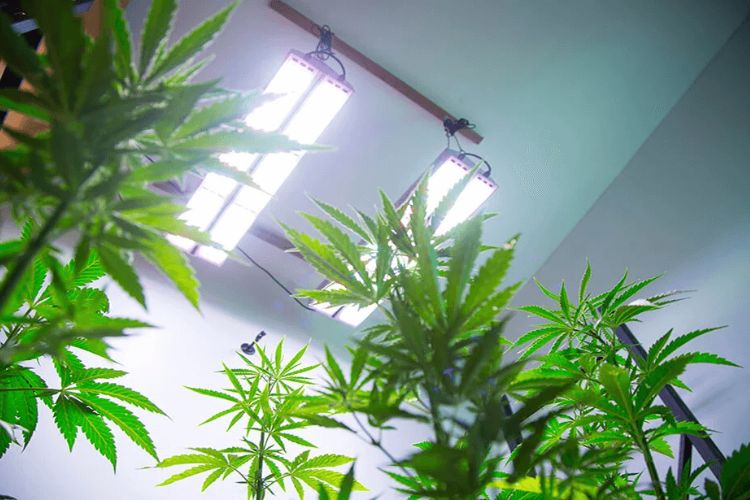HID Vs LED Grow Lights: Which Is For Your Indoor Garden?

Is HID vs LED grow lights have any differences? With advances in lighting technology, growers can choose between these two options. Both offer unique benefits and considerations.
This article will dig deeper into their pros and cons. Specifically, we will consider light spectrum, heat generation, energy efficiency, lifespan, and cost. By understanding the difference between these options, you can choose the lighting solution that best suits your indoor garden’s requirements and maximizes your plants’ potential.
Let’s compare them!
What Is The Difference Between HID vs LED Grow Lights?
To choose the right lighting option for your needs, we’ve helped you compare the two. Let’s see which is better!
Heat
HID grow lights, such as metal halide and high-pressure sodium lights, produce much heat during operation. For instance, a 1000W HID grow light can create a heat rating of 3000-4000 BTU per hour.
But, LED grow lights give off significantly less heat than HID. They convert most of the energy into light, minimizing wasted heat. For example, a 1000W equivalent LED grow light can produce around 1000-1500 BTU of heat per hour, depending on the specific model. This lower heat output is advantageous for indoor gardening as it reduces the need for excessive ventilation and helps maintain optimal temperature conditions for plants. Also, they contribute to energy savings and make them the preferred choice of many growers.
Maintenance

When comparing maintenance requirements, LED light has a clear advantage. HIDs often need extra parts, such as ballasts and reflectors. These parts may also require occasional maintenance and replacement. Yet, LEDs are stand-alone devices that don’t rely on external ballasts and have fewer easily damaged parts.
Durability
In terms of durability, HID light is relatively fragile due to its structure. In particular, glass bulbs and sensitive filaments make the bulbs susceptible to breakage and damage, especially during shipping or handling. Meanwhile, LEDs are more durable than HID. They are made of semiconductors and do not rely on fragile components such as filaments or glass bulbs. They can withstand vibrations, shocks, and temperature fluctuations, making them less susceptible to physical damage.
Regarding lifespan, HIDs have a relatively shorter lifespan. You must replace them every 10,000 hours based on the type and specific usage. In contrast, LED lightings have a significantly longer lifespan. Most high-quality models have a lifespan of 50,000 hours or more, which equates to several years of continuous use.
Furthermore, LEDs are more resistant to humidity. This feature makes them suitable for use in various growing environments, including greenhouse and hydroponic settings, where conditions can be more challenging than traditional HIDs.
Light spectrum
HID grow lights emit a broad light spectrum, including infrared (IR) and ultraviolet (UV). This broad spectrum closely resembles natural sunlight and is beneficial for the overall growth and development of plants. Meanwhile, LEDs can be customized to provide a specific spectrum optimized for plant growth at different stages. Also, they allow you to tailor to meet the needs of your crops. For example, the blue-white light spectrum promotes leaf growth during vegetative. Meanwhile, the warm red and white light spectrum stimulates bud formation at the flowering stage.
LEDs have the advantage of being more energy efficient as they can target specific wavelengths required for photosynthesis, reducing wasted energy.
In short, each has its advantages. While HIDs provide a broad spectrum similar to natural sunlight, LEDs are energy efficient and optimize plant growth.
Cost
There are several factors to consider when comparing their cost. Initially, HIDs tend to have a lower upfront cost than the latter. The reason is that their systems are generally more affordable, making them an attractive option for growers on a tight budget.
But LEDs offer long-term cost savings. Specifically, they are very energy efficient, converting higher electricity into usable light for plants. This efficiency results in lower energy consumption and lower electricity bills over time.
Comparison Table
| Features | HID | LED |
| Heat | More | Less |
| Maintenance | Require more | Require less |
| Durability | Less durable | More durable |
| Light Spectrum | Broad spectrum | Can be customized |
| Cost | Lower upfront cost | Higher upfront cost |
What Are Pros And Cons Of HID vs LED Grow Lights?

Here is a summary of these two grow lights’ main pros and cons!
HID
Pros:
- Low initial cost
- Produce a broad spectrum
- High-intensity output
- Effective for flowering
Cons:
- High energy consumption
- Generate a significant amount of heat
- Shorter lifespan
LED
Pros:
- Energy-efficient
- Long lifespan
- Customizable light spectrum
- Generate less heat
Cons:
- High upfront cost
Which Should You Choose?
In general, LEDs are the preferred choice of most growers. They offer many benefits over HIDs, including energy efficiency, longer lifespan, customizable light spectrum, and reduced heat generation.
Although LEDs have a higher upfront cost, long-term cost savings, lower energy consumption, and minimal maintenance requirements make them a more economical choice. Also, the ability to tailor the light spectrum for specific growth stages of plants enhances their overall efficiency. Besides, LEDs are compact and lightweight, making them suitable for many growing spaces.
Considering these benefits, LEDs are the choice we recommend for growers looking for ultimate performance, efficiency, and convenience.
Conclusion
In summary, choosing between HID vs LED grow lights for your indoor garden depends on many factors and considerations. While HID lights are the traditional choice and provide a broad spectrum of light similar to natural sunlight, LEDs have emerged as a more customizable and energy-efficient option. So which one is more suitable for your garden? Comment to let us know!
FAQs
Related posts:









